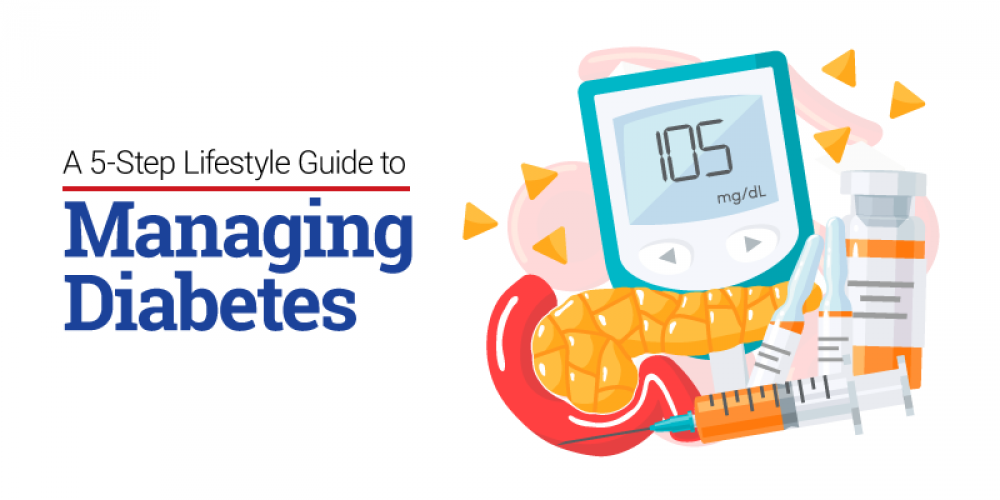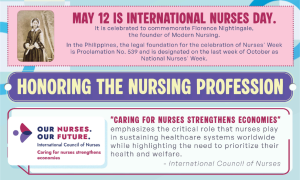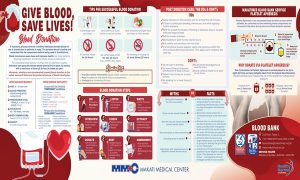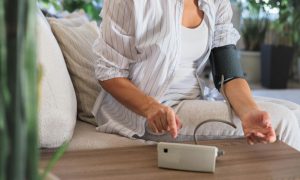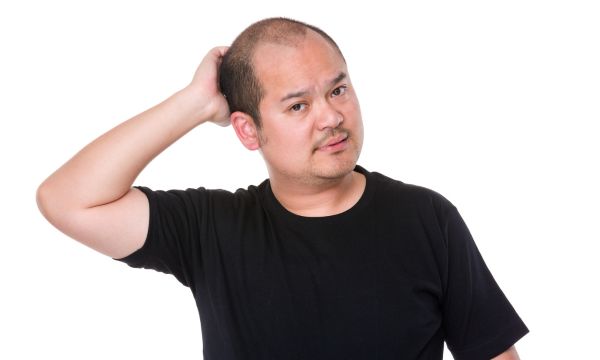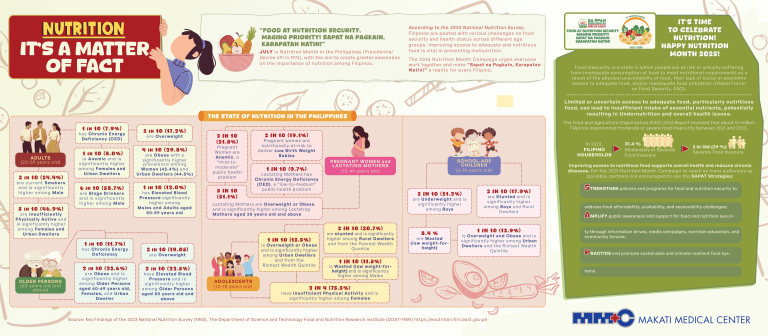According to the 2017 Diabetes Atlas of the International Diabetes Federation, 6.2% of the total adult population of the Philippines is diagnosed with diabetes – that’s more than 3.7 million Filipinos. Experts estimate that the number of diagnosed diabetics in the country has now reached 5 million, and a similar number will remain undiagnosed.
Preventing, diagnosing, and managing diabetes must be taken seriously. Diabetes, if not managed properly, can become a debilitating disorder and may even lead to heart attack, coma, amputation of a gangrenous foot, blindness, end-stage kidney disease, and eventually, death.
Understanding Diabetes
Diabetes mellitus is a chronic metabolic disorder that can be managed with diet, exercise, and proper medication. It is characterized by elevated blood sugar levels caused by an imbalance in insulin supply and demand. There are two common types: Insulin Dependent Diabetes Mellitus (Type 1 or IDDM) and Non-Insulin Dependent Diabetes Mellitus (Type 2 or NIDDM). Its hallmark signs and symptoms include frequent urination, abnormal thirst and dry mouth, constant hunger, and weight loss.
The Role of Insulin
Insulin is a hormone produced by the pancreas. Its primary role is to transport sugar or glucose from the bloodstream into the body’s cells, where it is converted into energy. Without insulin, glucose cannot be converted into energy, and it stays in the bloodstream, resulting in elevated blood glucose or hyperglycemia.
Type 1 Diabetes or IDDM
In Type 1 diabetes, the pancreas produces none to very little insulin because of an autoimmune condition where one’s immune system attacks the insulin-producing cells of the pancreas. As such, people with type 1 diabetes need daily insulin injections to maintain an acceptable blood glucose level.
Type 2 Diabetes or NIDDM
Type 2 diabetes accounts for approximately 90% of all cases as it is commonly caused by obesity, lack of exercise and physical activity, and an unhealthy diet. Unlike type 1 diabetes, the pancreas produces some insulin, but either it is not enough or the cells do not fully respond to it.
There is no cure for diabetes, but it can effectively be managed to prevent or delay its complications. Here is a 5-step lifestyle guide to living a long, high-quality life despite the condition.
Step 1: Diagnosis and Awareness
If diabetes runs in your family, that doesn’t automatically mean that you also have the disorder. But, if you’re experiencing any of the known signs and symptoms of the disease, consult your physician immediately.
Diagnosis is the first step to proper treatment and medication. And without proper diagnosis, you won’t be able to adjust your diet and lifestyle according to your individual condition. Remember: there are several types of diabetes, and each one has its own treatment. Never self-medicate!
Your doctor may ask you to go to the endocrinology section or laboratory for the following diagnostic procedures:
- Random blood sugar test – a blood sample is taken at random, and levels above 200 mg/dl suggest diabetes
- Glycosylated Hemoglobin or HbA1c Blood Test – measures your blood sugar control level over the past three months. The test can also diagnose Type 2 diabetes and prediabetes.
- Fasting Blood Sugar (FBS) – this test is usually done in the morning, after a fasting period of around 8-10 hours. An FBS level of
Normal – less than 100 mg/dL
Pre-diabetes – up to 125 mg/dL
Diabetes – above 126 mg/dl
- Oral glucose tolerance test – This is the best method to diagnose diabetes as it indicates how the body reacts to glucose. An FBS test is taken, and the patient is given a sugary drink. Blood sugar is then tested periodically over the next three hours.
It’s also crucial to learn more about diabetes and how to live with it. You can ask your health care team about reliable resources, seminars, support groups, community events, and online classes.
- Diabetes Voice – provides information about diabetes care, prevention, and industry news.
- International Diabetes Federation – an organization leading the diabetes community worldwide since 1950. You can find a variety of resources for health professionals, researchers, and people living with diabetes. If you need a kick of inspiration and motivation, check out their personal stories page.
- Diabetes UK – an organization offering emotional and mental health support for those with diabetes. You can head to their YouTube channel for news and stories from diabetics.
- Makati Med’s Diabetes Club, an organization that hosts exciting activities for its members. They also offer special discounts on products such as blood glucose kits and meal replacements.
Step 2: Proper Treatment and Medication
Your physician will individualize a plan of treatment according to your diagnosis and current health status. Generally, those with type 1 diabetes are prescribed with daily insulin injections. The dosage and frequency will vary per individual. Meanwhile, those with type 2 diabetes are prescribed with oral hyperglycemic agents to lower their blood sugar. Other medications may also be prescribed to control diabetes complications such as hypertension.
Step 3: Diet
Generally, the diet plan for diabetics is also a healthy choice for those without the condition – low salt, low fat, and low sugar. But, people with diabetes must be extra-conscious about what they eat and drink to prevent and delay serious complications. Additionally, there are specific food ingredients that are known to help reduce your blood sugar levels, such as ampalaya or bitter gourd, chia seeds, Greek yogurt, flaxseeds, broccoli, and more.
- Choose whole grain carbs rather than starchy carbs. Its high fiber content helps control blood sugar levels.
- Avoid animal protein, which may cause insulin resistance. Eat lean, white meat over red meat.
- Drink water, unsweetened coffee, or tea instead of fruit juice, soda, and other artificial beverages.
- Eat at least three servings of green, leafy vegetables and other vegetables high in fiber.
- Limit alcohol intake.
- Use unsaturated fats such as olive oil, canola oil, corn oil, or sunflower oil rather than saturated fats such as butter, coconut oil, or palm oil.
Diabetes, especially Type 2 DM can successfully be managed with proper diet. In fact, losing a mere 7% of your body weight can significantly reduce complications and risks. Keep a food diary, so that you can determine which food or diet plan works best for you.
Step 4: Exercise
Physical activity is an essential part of your diabetes management plan. Exercise increases insulin activity, so your blood glucose is used up as energy, thereby reducing your blood sugar levels. There are two types of exercise diabetics must focus on: aerobic exercise and strength training.
According to the World Health Organization, adults aged 18 to 64 years old must perform at least 2 ½ hours of moderate-intensity aerobic physical activity throughout the week or at least 75 minutes of vigorous-intensity activity. In addition, muscle training activities must be done at least two days a week.
Step 5: Continuous Blood Glucose Monitoring
It’s highly recommended for diabetics to have their own capillary blood glucose monitoring (CBGM) kit to track their blood sugar levels throughout the day and night. Your physician or healthcare team will prescribe a monitoring regimen and teach you how to properly use a CBGM machine.
A CBGM is simple to perform and can be done without the help of another person. It involves the use of a glucometer and lancet. With a quick needle prick to the finger, a single drop of blood is drawn and measured using a test strip.
Make Healthy Lifestyle Choices to Manage Diabetes
Educating yourself about your condition and making healthy lifestyle changes is the best way to manage diabetes. Find ways to alleviate your stress (exercise can help), set goals every day to motivate yourself, and visit your doctor regularly.
If you’re not exercising or observing a well-balanced meal plan, you must get to it now. Read more about stories of people living with diabetes to get inspired. You can check Makati Med’s Diabetes Center and Endocrinology Section for diabetes management and counseling.

